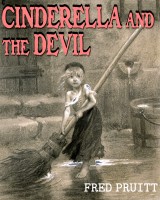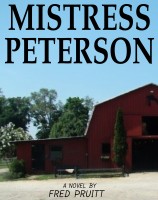|
2010-07-05 -Signs, Portents, and the Weather-
|
|
Cavalry legend awarded Order of St. Michael
|
Combat Aviation Brigade, 1st Infantry Division
As the convoy charged north, we flew south, blistering along at well over one hundred knots, Parker working with his M-60 from the right side of the aircraft. His tracers were impacting on the spider holes as we ripped past, his targets not more than ten to twenty yards from his muzzle. We were so low that if someone had reached up out of a truck or tank turret, they probably could have caught our skid.
"Suddenly, not more than a hundred yards to my front, a five-thousand-gallon tanker truck took a direct RPG hit, and the diesel fuel it was carrying exploded like a nuclear bomb. Sheets of flame, parts of the truck, smoke, and dust shot up, momentarily blinding me. The little OH-6 lurched violently with the shock of the explosion, as though a giant unseen fist had landed a smashing blow to the nose of the aircraft.
This excerpt is from Low Level Hell: A Scout Pilot in the Big Red One, written by Lt. Col. (Ret.) Hugh Mills, who served three tours in Vietnam as a pilot in the 1st Infantry Division. The 300 pages of the book maintain the same intensity seen in this brief excerpt, depicting Mills actions in Vietnam that inspired his nomination for the Order of St. Michael award.
Named after the biblical archangel charged with the waging war against evil, the Order of St. Michael award is bestowed upon aviators who have significantly contributed to Army aviation. The legendary image of St. Michael standing over a defeated dragon is a symbol of Army aviations prowess on the battlefield.
Leaders of the Combat Aviation Brigade, 1st ID inducted Mills and four active-duty, 1st ID aviators in to the order, Jan. 23, 17 years after Mills retirement from the Army.
Its a ceremony thats steeped in tradition, said Lt. Col. Kenneth Chase, commander of the 1st Squadron, 6th Cavalry Regiment. Chase individually knighted each aviator using the command saber, a ceremonial sword symbolic of the cavalrys direct lineage to the days of horse-mounted combat.
I was totally shocked, it didnt occur to me that I was going to be included in the ceremony, said Mills.
To many air cavalry pilots, however, Mills induction is no surprise. First Lt. Kurt Hunt, a pilot with Troop C, 1-6 CAV, is among the many aviators who have read Low Level Hell.
A combination of his and his fellow scout pilots tactics, techniques and procedures are still being widely used today, said Hunt, whos copy of the book is full of brightly colored pieces of paper, marking passages that hold special importance to him.
It is an integral part of history for myself, said Hunt. He was a lieutenant platoon leader in a scout platoon, in the Big Red One, much like I am today.
It is hard to find a cavalry pilot who has not read Mills book, or at least heard of him. Mills recognizes the success of his book, but holds that it is the only difference between him and his peers.
Im not any better than my brothers who were scouts, its simply because I took the time to write the book, he said.
For the aviators that continue in the spurs of Mills and his peers, it is important to recognize the service of their predecessors with awards such as the Order of St. Michael.
We look up to aviators like Mills, said Hunt. I dont see how we couldnt. I could only hope that later on people will look back at my generation the way we look back at Mills.
Lt. Col. Kenneth Chase, commander of the 1-6 CAV, CAB, knights Lt. Col. (Ret.) Hugh Mills as CAB Commander Col. Frank Muth dons Chief Warrant Officer 4 Mike Lee with the Order of St. Michaels medal during an induction ceremony, Jan. 23. Mills and four other 1st Infantry Division aviators were inducted in to the Order of St. Michael, one of the highest honors bestowed upon an Army aviator. 
|
Posted by Anonymoose 2010-07-05 09:39||
||
Front Page|| [11132 views ]
Top
|
|
00:40 Frank G









|



















